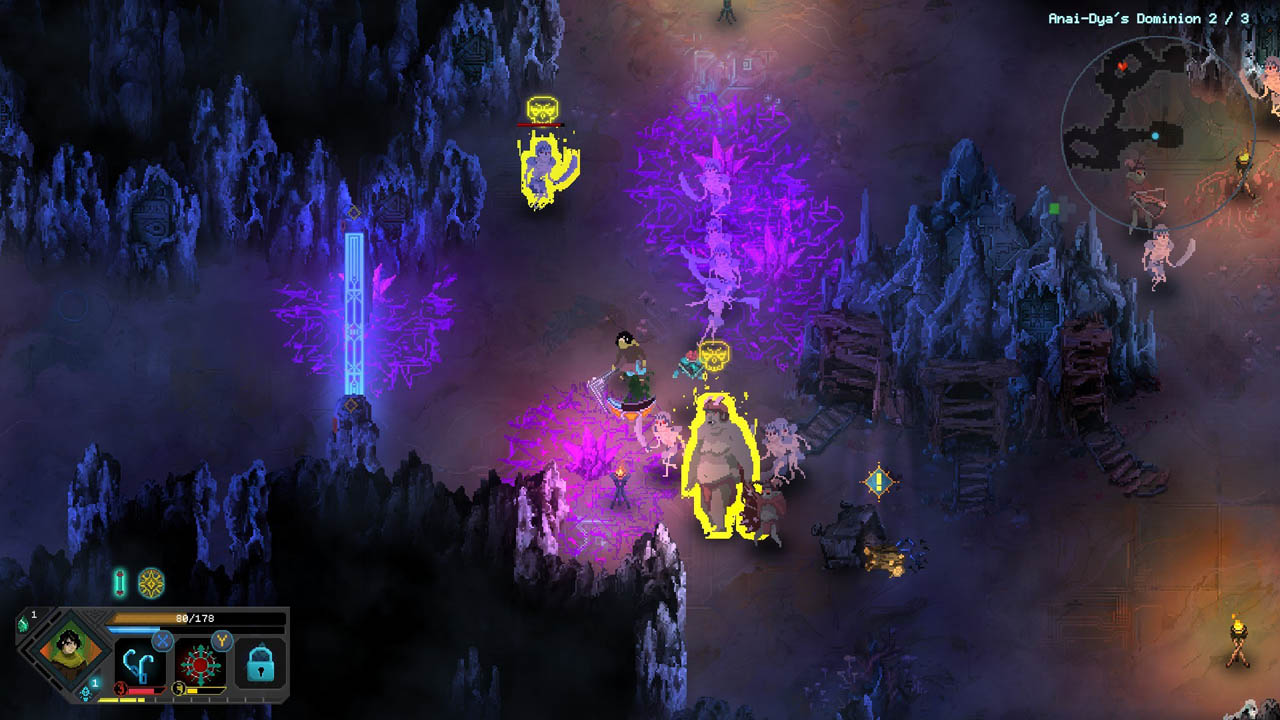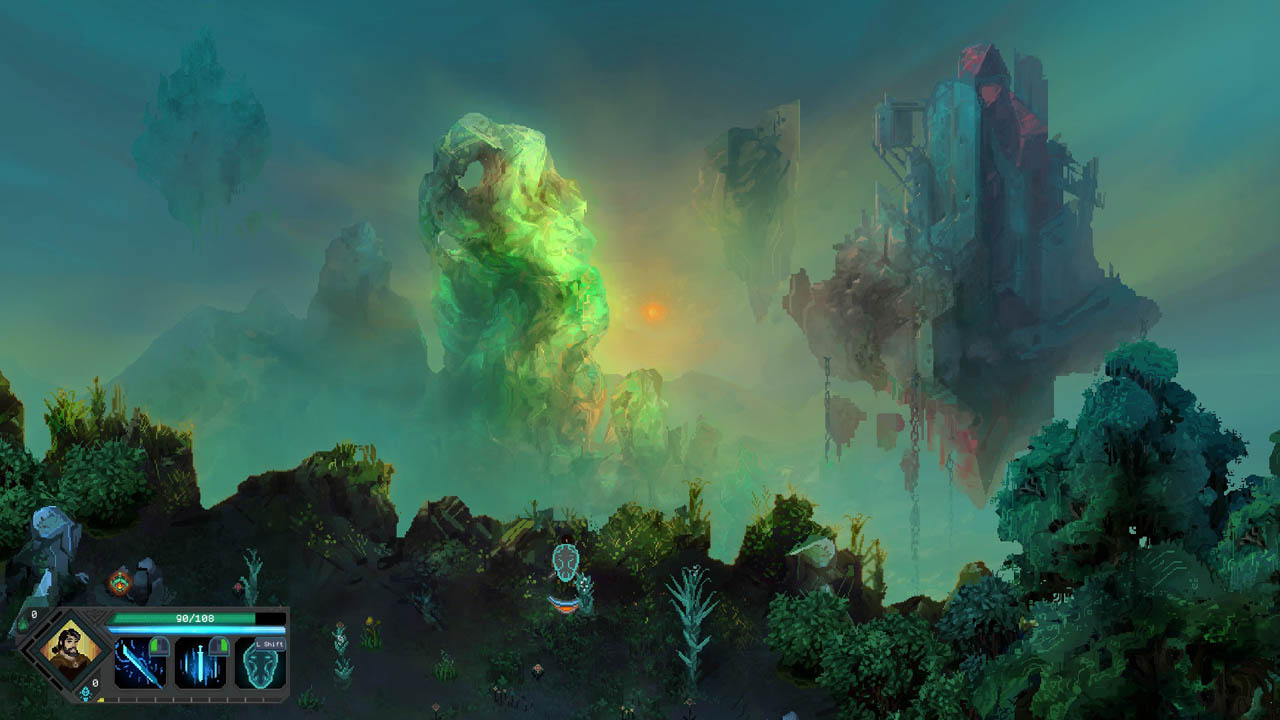Edited by: Tiffany Lillie
One thing you never grow accustomed to in games is dying. It signifies failure to complete a task, or at the very least, an inability to grasp the core skills needed to progress. An interesting thing about the roguelike genre though, is that it is built upon the back of failure, at least in the aforementioned sense. For those that are fans of roguelikes, this failure is a crucial part of the gameplay, as it forces you to make miniscule incremental changes in behavior, or to apply newer rewards after each run to get further and further… which is addictive. If the core function of a roguelike is to hook you, then look no further than Children of Morta, because it's the good stuff, and you are going to die a lot.
Kicked off on Kickstarter.

Released on September 3, 2019 by developer DeadMage and publisher 11 Bit Studios, but in production since it first appeared on Kickstarter in 2015, Children of Morta takes the tried-and-true methodology of a roguelike and makes it a family affair. When an ancient evil reawakens and begins killing local wildlife, it is up to the Bergsons to be the front line in the fight against the spreading “Corruption” — a task that has been a part of their family tradition long enough that Granny introduces the family to the concept through a secret door in their own home.
Where most games push a primary hero, or an unlikely band of misfits fighting together to save the world, Children of Morta instead stakes its claim with family being the most important theme. Beginning with a father defending his family with a sword and shield, as the game progresses more and more members of the family become playable, each with their own unique skill set and special abilities. While Lucy, the eldest daughter, may excel with a bow, Kevin, his youngest son, instead uses daggers. Other talents in the family include the use of fireballs, a hammer, etc.
Through the secret door.
In order to access these differing abilities, you must complete runs in the dungeon below the house, which is broken into three regions. Each time you fail in the dungeon you are saved from dying by Grandma’s special magic, and are sent back to the house to tell the story of what you encountered. At first it is hard to lose when you feel as though you could make it all the way through, but as you get further connected to the characters this gets easier because you'll enjoy learning more about the Bergsons. Each of these segues represent progression of the story, and are done masterfully through voiced narration and story arcs that connect you with members of the family, old and new. The developers put a strong emphasis on this as a way to influence the game, so it is good to see that it paid off:

“One person telling the players the story as they witness it gave us the ability to give players the information they need as quickly as possible, make an emotional impact, and then get them right back into the gameplay.” - Jakobsen Locke, Narrative Designer at Dead Mage (from this page.)
Make no mistake: even though the story is well written, and fleshed out perfectly for this particular game, it is not the only element to love. The musical score somehow feels modern, even though its pipes and vocals are reminiscent of an old Celtic or English song, which sets the mood particularly well, especially in the dungeons. The music's pacing is frenetic and enjoyable as you hack your way through hordes of undead, bats, and corrupted beings. I am not ashamed to say that at one point I played this soundtrack completely on its own while writing, and found it to be immediately nostalgic, which is usually a good sign that a game has its hooks in me.
A new depth.
Speaking of nostalgia, Children of Morta manages to take a pixel art style that has been around since the beginning of gaming and give it emotional depth and fluidity of movement. When the Bergsons are sad you can see them sobbing; when they are tired you can watch them pant; and while they are enjoying their victories, it is easy to feel yourself in the room. This is no easy task with pixelation, and yet it shines bright, even in combat. The character models bring an aggressiveness to battle that feels fast and powerful, which is insane with graphics like these. The backdrops are a sight to behold also, which speaks to how much can be done with so little, as they convey the world that the Bergsons are clinging to in a way that makes you want to save it too.

The gameplay itself is tight and interesting, with each character feeling completely different, even though the combat is relatively lackluster due to only two to three button mappings that don’t combo together at all. This doesn’t prevent the visceral feeling of combat impact, as every hit lands with a feeling, and the special abilities (such as an explosive arrow shot) clear waves powerfully. Each character levels up independently of one another through an experience bar that grows on every dungeon run. As new levels are hit, you have your choice of a progression tree that is distinct to the character. This type of independent player progression encourages varied character utilization, but it also encourages co-op, as playing with a friend will level up your characters faster. This progression system, coupled with the simple combat is what allows the co-op element of the game to shine through, as it is really easy to pick up and just have fun with.
Nurture your family.
The aforementioned skill trees are unique to each member of the Bergson family, but each has a tier that, when unlocked, has a positive impact on the family as a whole. This means that although you are leveling characters actively to unlock new proficiencies unique to them, there is a positive impact on the other members of the family for when you decide to change it up. In addition to these individual level systems, both Grandma and Uncle Ben offer family-wide upgrades purchasable through the form of Morv — the in-game currency. These can be increases in the form of critical hit percentage, overall health, damage, and more.

Hard-earned rewards.
Within the procedurally generated dungeons, players will also find totems and power-ups that offer similar advantages to those that can be purchased with Morv, and although these are temporary boosts, they can be game-saving when leveraged effectively against bosses. The fact that these dungeons are procedurally generated also ensure that even when you die for the tenth time in the same dungeon, it feels like the very first time (cue Foreigner), which helps keep things fresh.
The Verdict: Excellent
All things being equal, the only true knock on this game is the fact that there is not a complex combat system or unique equipment. Every other elementis gorgeously built, and obviously crafted with passion. If the intent is to tell an amazing story set upon a unique backdrop, with interesting characters and music, then that is certainly achieved here. The Bergson family is worth your time, so give them a visit — you won’t regret it.


